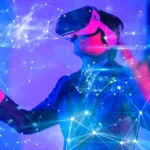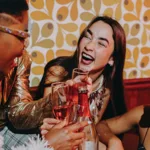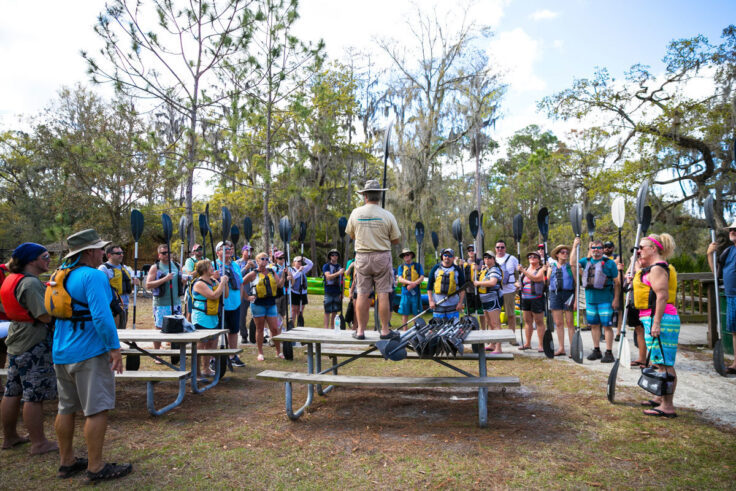
The Science behind Building Corporate Dinner Events for the Five Senses
You know how hard it is to come up with fresh corporate event ideas that people haven’t seen before. In our overstimulated society, it isn’t easy to genuinely surprise and delight your guests. That’s where a destination management company like 360DG and a specialist like Dr. Irwin Adam comes in.
Adam combines passions for food, tech, design, and engineering to create memorable, one-of-a-kind culinary experiences. Part scientist, part foodie at the helm of his Future Food Studio, he has helped build immersive experiences like The Museum of Ice Cream NYC that delight and surprise visitors. In that way, his approach is a lot like 360DG’s – to make events memorable by going beyond simply “interactive.”
“These days, our clients want to meet with the people that live in the destination, learn about it, interact with the vendors. They want to customize every single event to their group. In the same way, that’s what we do at 360DG – we listen to the client, hear what their objectives are, and build around their needs,” says Travis Dina-Pham, 360DG’s Account Executive in Ojai, California.
Recently, Dina-Pham worked hand in hand with Adam to do just that. They built the plan for a signature corporate event dinner in Ojai to put the destination and all five senses on display, and at every phase. And we’re not just talking food that smells good. This was an event planned to embrace all the sights, sounds, feelings, smells, and, of course, tastes that make the Ojai Valley the legendarily spiritual place it has been for centuries.
Here, we dive deep with Adam into the science of why the senses are the better evolution of “interactive” and then highlight some of the ways they plan to bring them to the forefront in this signature corporate event in Ojai.
You say your design process built around the five senses is called “multimodal math.” What do you mean by that?
The idea is that we, as humans, have all these senses that are probing the environment around us – seeing, hearing, touching, tasting, smelling – and we take the information from those senses, it goes into our brains, and it creates a single unified experience. It sounds obvious, but that idea is the foundation we use to create experiences. A lot of the research on the physiology and biology of it has been done over the last decade, so we try to build off that work and constantly iterate and improve. It’s art and science. With immersive dining, you’re able to put someone in a totally unique experience by curating everything they touch, see, taste, hear, and smell.
So taste is obvious for a dinner event, but can you give an example for curating for another sense?
Earlier today, we were working on the Ojai project. At the start of the day, guests will make their way into town. When they return to their rooms, there’ll be a special package waiting for them. So in our meeting today, we had a deep discussion for about 90 minutes about the container and what’s inside it – understanding how it opens and closes, how it feels in your hands, everything. That was the entire meeting. When you holistically create in that way, you don’t have to tell people what you did; people absorb that work and craftsmanship subconsciously as they hold what you’ve built in their hands. You create something extraordinary for them to touch and feel. They remember that.
What is it about interacting with an experience that makes us remember it?
Humans are very primitive. We rely on our primitive brain to guide us through life. How we probe the world with our senses is very fundamental to how we experience everything. So by curating and creating around the senses, we’re able to transport people into the new world, so we can tap directly into the creation of memory. Scent, especially, gets you there.
Why does scent conjure such vivid memories?
We talk about this often. When we chew food, we generate these tiny aerosols that go into our nasal package and interact with our olfactory neurons. And the olfactory bulb happens to be right next to the memory cortex, which is the shortest distance from any of the signals we get from the outside world. That’s why there’s such a strong correlation between smell and memory.
What is it about food that inspires such a strong connection between people?
Fundamentally, food is just such an incredible platform. It was the original social media. It was the way we shared, communicated, told stories, experienced the history of our forebears. It’s really how we transcend a lot of boundaries between one another, be it age, gender, religion, or race. We all need to eat. We all have our collection of food experiences. When we feed someone, that literally becomes part of the people we’re breaking bread with. The food you give your child becomes their hair, skin, nails, and breath. It’s very powerful, and it shouldn’t be taken in a frivolous way.
The 5 Senses of Ojai’s Valley of the Moon Dinner Event
As one of the few east-to-west oriented valleys in North America, Ojai is sometimes referred to as a “spiritual vortex.” Because “ojai” means “moon” in Chumash, the event’s entire concept was built around the idea of the “valley of the moon.” The menu is reflective of the Valley and is tightly integrated with the other senses as the event rolls along. Here are a few particularly cool ideas and components Irwin and Dina-Pham built into the plan for the event. If all this sounds like a theater production, that’s because it is:
The Pink Moment
“The Pink Moment” – the famous phenomenon in Ojai when the setting sun hits the sky above the Topa Topa Mountains – is a big part of the dinner, used to start and end the event, symbolizing 24 hours passing in the valley. To get the effect, the dinner is hosted in a tent, with lights used to then project the effect on the ceiling above.
Tide Pool on a Plate
An idea that was eventually scrapped because of dietary concerns, the tables would be 3D modeled after the topography of the nearby Santa Barbara coastline, with a tide pool system created right on the undulating tabletops. When water receded, what is left is actually guests’ first course prepared by the acclaimed chef: whelks, edible seaweed, and other components reflective of the seafood found along the coast.
Dessert as Grand Finale
To make the last course especially memorable, a canopy opens over the guests, simulating the night sky, completed with s’mores and a campfire. There’s the visual of the twinkling sky, the feel-good smells and sounds of a crackling fire, and the sticky-sweet taste of that first s’more. The night is then concluded with another Pink Moment simulation, marking the end of the 24 hours theme.







 "/>
"/>